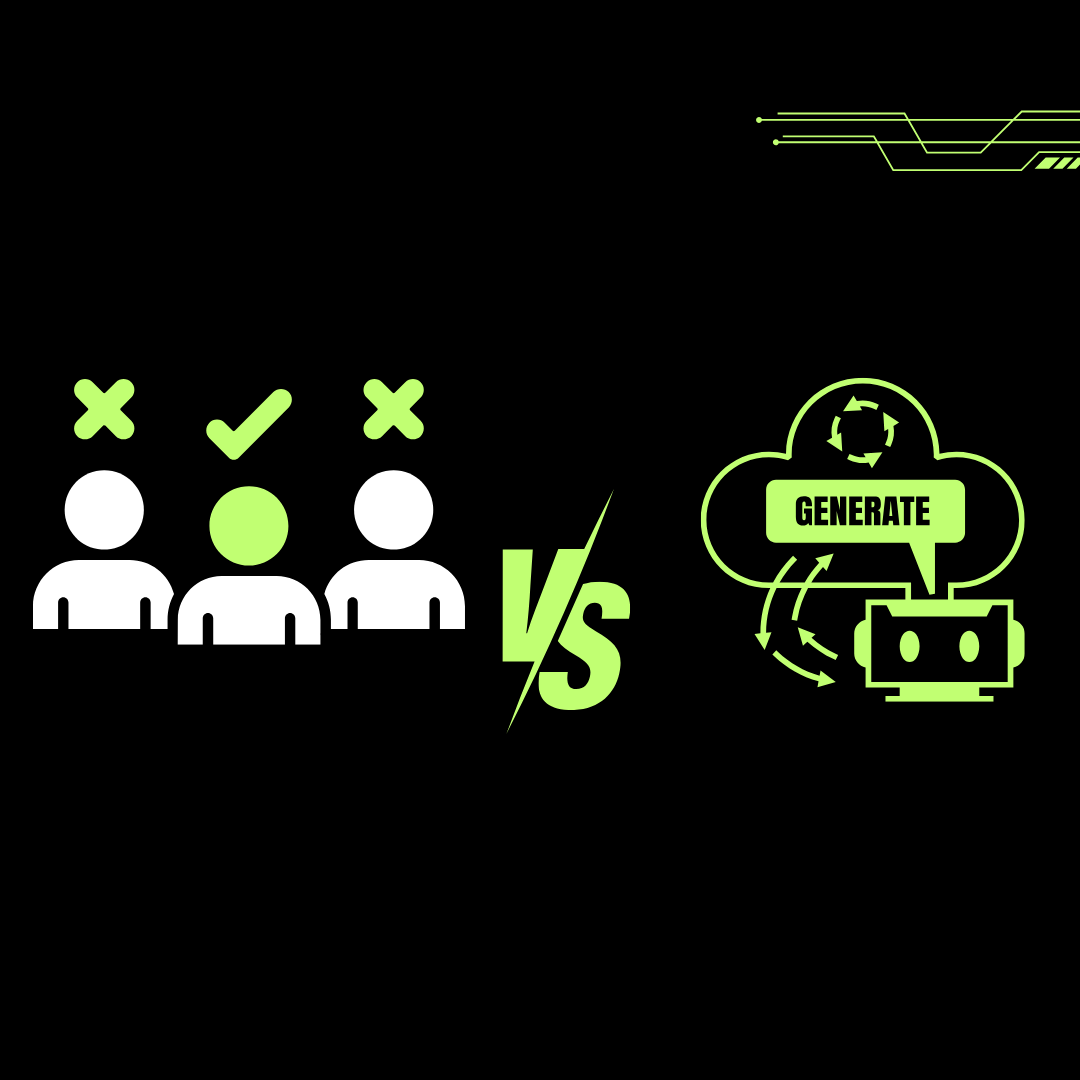
Generative Vs Discriminative AI Models
Posted in :
Artificial Intelligence (AI) has become an integral part of our lives, powering innovations across industries. Two key types of AI models dominate the landscape: discriminative models and generative models. While both play a vital role in machine learning, they serve distinct purposes. This article explores the fundamental differences between these models and their applications.
What Are Discriminative Models?

Discriminative models focus on drawing a boundary between different classes of data to make predictions. Think of it as teaching a computer to distinguish between categories, such as cats and dogs.
For instance, in a task to classify animals, a discriminative model will aim to draw a decision boundary between the two classes using the training data provided. The goal is to determine the probability that a given input belongs to a specific class.
How They Work
Discriminative learning relies on supervised learning principles, where the model learns from labeled data. The problem statement is often phrased as:
“Given a data point xxx, what is the probability that it belongs to class yyy?”
For example:
- Input: An image of an animal.
- Output: The probability that the image is of a cat or a dog.
The focus is entirely on distinguishing between classes, making discriminative models ideal for tasks like classification, spam detection, and sentiment analysis.
What Are Generative Models?

In contrast, generative models aim to learn the underlying data distribution and use it to create new samples. Instead of focusing on separating classes, these models understand the data’s core essence, enabling them to generate new data points that resemble the original dataset.
How They Work
A generative model does not predict the probability of a class label for a given input. Instead, it generates the data itself by learning from the underlying data distributions.
For example:
- A generative model learns to represent cats and dogs by analyzing their features and patterns.
- Once trained, it can generate new images of cats or dogs based on what it has learned.
Generative models also support conditional sampling. For instance:
- If you request a “cat image,” the model accesses its learned representation of cats and generates one.
- Similarly, for a “dog image,” it taps into the dog distribution and creates a sample.
These types of models are called conditional generative models, as they generate data based on specific input conditions.
| Feature | Discriminative Models | Generative Models |
| Objective | Predict class labels based on input data. | Generate new data samples that resemble the training set. |
| Focus | Differentiating between classes. | Understanding the underlying data distribution. |
| Example Task | Classifying an image as a cat or dog. | Generating a new image of a cat or dog. |
| Applications | Spam detection, sentiment analysis, fraud detection. | detection. Image generation, language modeling, creative tasks. |
Examples of Generative Models
Generative models come in various forms, each with unique features and applications:
- Generative Adversarial Networks (GANs): Known for generating realistic images and videos.
- Diffusion Models: Effective for generating complex patterns and designs.
- Variational Autoencoders (VAEs): Learn compact representations of data and use them for reconstruction.
- Autoregressive Models: Predict the next element in a sequence, commonly used in language modeling.
- Transformer-Based Models: Powerhouses behind state-of-the-art natural language generation tasks.
- Adversarial Autoencoders: Blend adversarial training with autoencoders for high-quality generation.
Each type of generative model serves specific purposes, ranging from creating art to training AI for dialogue systems.
Applications of Generative and Discriminative Models
- Discriminative Models
- Spam filters (e.g., classifying emails as spam or non-spam).
- Image recognition (e.g., identifying objects in photos).
- Sentiment analysis (e.g., determining the tone of a review).
- Generative Models
- Image synthesis (e.g., creating new images based on training data).
- Text generation (e.g., AI writing assistants like ChatGPT).
- Speech synthesis (e.g., converting text to human-like audio).
Final Thoughts
Understanding the difference between generative and discriminative models is essential for anyone delving into AI and machine learning. While discriminative models excel at classification and prediction tasks, generative models shine in creativity and data generation. Both have unique strengths and applications, making them invaluable in advancing AI technologies.
If you’re interested in exploring generative models further, check out the link

